9 Kings 9 Sangkaracha Monks Thai Coin Amulet Luang Por Mui
Chao Khun Nor Thai Monk Amulet Blessed by the Great LP Tim
Rian Jao Khun Nor Nor Wor Mor Dork Bua 2 Khang 2515 BE School Building Edition, Blessed by the Great Late Luang Phu Tim Issarigo, of Wat Laharn Rai, in raytong (world famous for his Pra Khun Phaen Pong Prai Kumarn amulets) This is an extremely fine example of the Rian Roop Khai BE Guru Monk Coin amulet, in Nuea Galai Tong, from the 2515 BE Edition, In the image the Great Chao Khun Nor, an Arya Sangha Monk of Historical Importance, who maintained a perfect, exemplary, and admirable trajectory of practice in his Patipata as a Buddhist Monk. The "Thammawitakko Pikku" amulet encapsulates the essence of Chao Khun Nor's teachings, offering wearers a tangible link to his spiritual wisdom. As we delve into the intricate details and symbolism of this sacred talisman, we come to appreciate not only the craftsmanship behind it but also the profound spiritual journey of the revered monk, forever immortalized in the divine elegance of this extraordinary amulet.
Phra Somdej Wat Rakhang Ancient Amulet Somdej Toh
Experience the Splendor of the Benjapakee Immortal Classic Family's Crown Jewel: the Pra Somdej Wat Rakang Pim Yai Gaes Talu Sum (Topknot Pierces Arch), a masterpiece by Somdej Pra Puttajarn (Dto) Prohmrangsri of Wat Rakang Kositaram. It boasts exquisite front face detailing, flawless design, and enchanting rear face intricacies. This particular model, a Pim Niyom, is the creation of the revered artisan Chang Luang Wijarn. And yes, you can have it encased in Solid Gold or Silver for FREE.
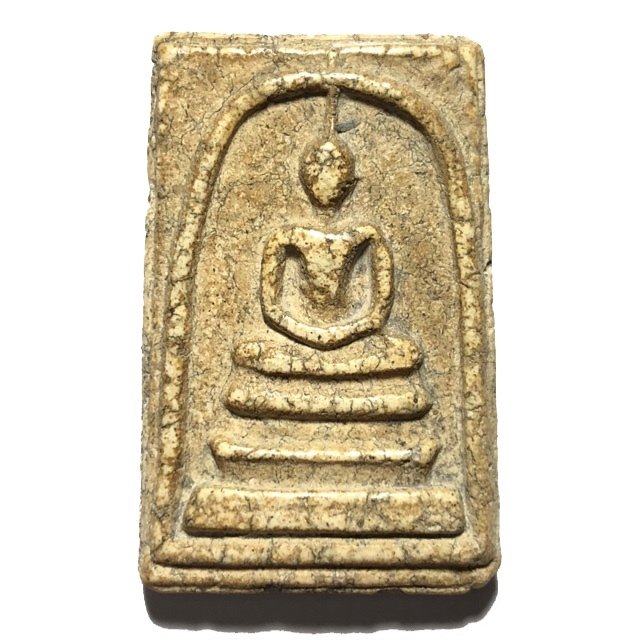

A truly ancient treasure dating back to the second era, crafted between 2390 - 2396 BE. The rear face of this amulet is truly unique, adorned with exquisite markings reminiscent of a classic Pra Somdej Wat Rakang. These amulets were dried on various surfaces, from marble stone to Mai Gradan wooden boards, resulting in distinct textures. Each Pra Somdej Wat Rakang is one of a kind, reflecting its individual character, adding to its legacy as the "King of Thai Amulets."
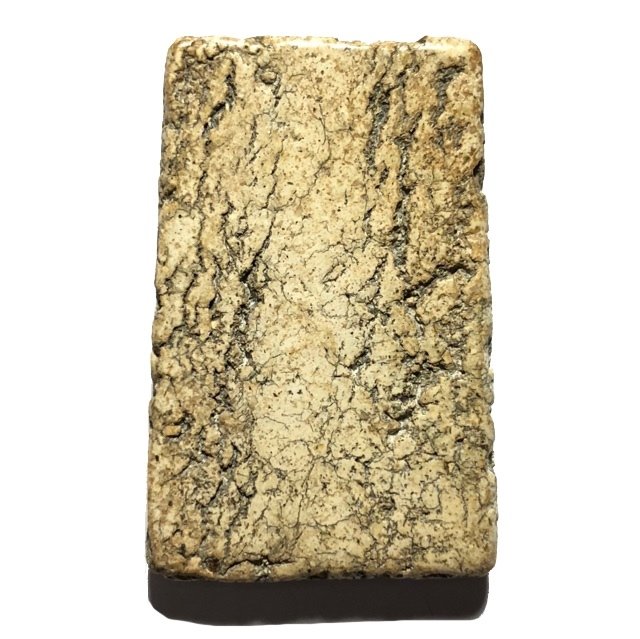
This amulet is accompanied by a micro-chipped card of authenticity, certifying its origin and the esteemed artisan's contribution, issued by the Pra Tae Mueang Siam Original Amulet Association.
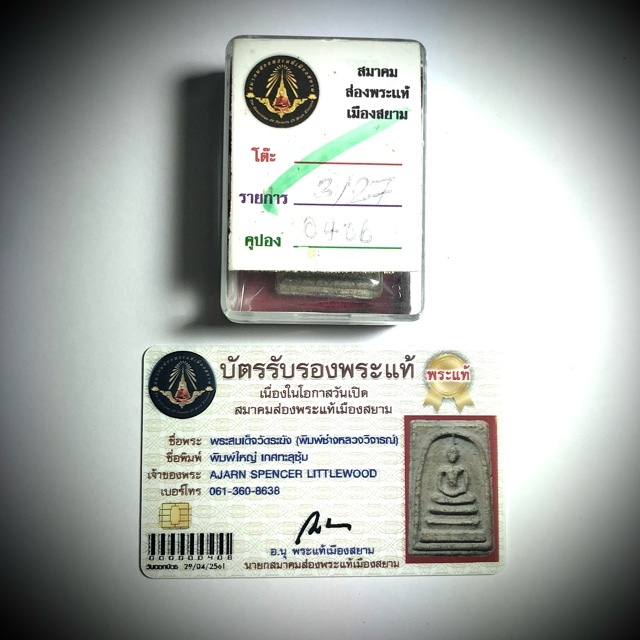
An immortal classic and one of the most renowned Thai Buddhist amulets in history, treasured by devoted enthusiasts and affluent collectors of Somdej Pra Puttajarn (Dto) Prohmrangsri of Wat Rakang Kositaram. Crafted nearly two centuries ago, the Pra Somdej Wat Rakang has earned its title as the ultimate Thai amulet, thanks to its historical significance and the legend of its creator. It serves as the pinnacle and master amulet (Ongk Kroo) for all other Pra Somdej amulets.
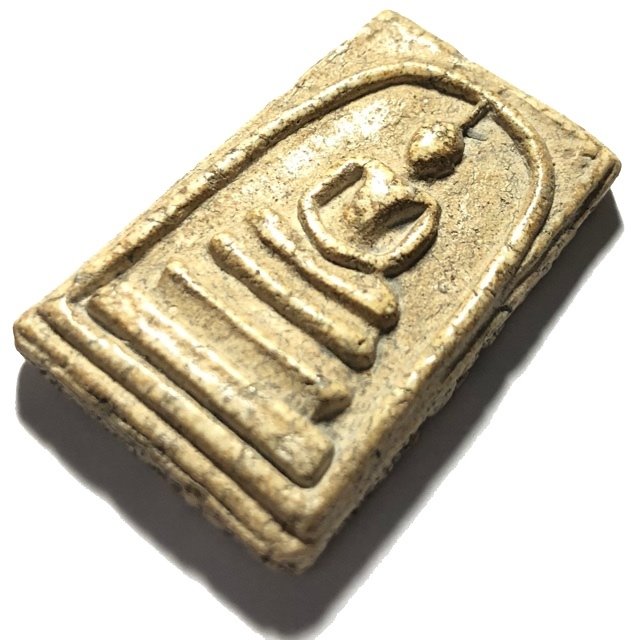

This amulet comes with a certificate of authenticity in the form of a micro-chipped certificate card from the Chomrom Pra Tae Mueang Siam Amulet Appreciation Society. It also includes a complimentary box with an authenticity confirmation sticker. You can choose between Gold, Waterproof, or Solid Silver Casing—all included with your amulet. Plus, enjoy FREE EMS Shipping.
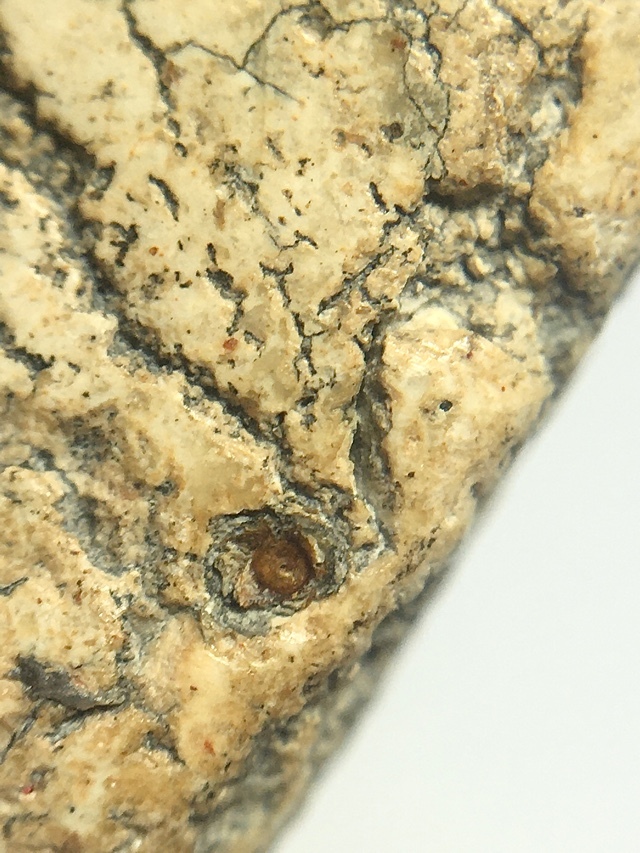
The rear face showcases all the classic features and sacred ingredients of an authentic Pra Somdej Wat Rakang of Somdej Dto. Its beautiful lined pattern, acquired over nearly two centuries, adds character and aids in authentication. Collectors and devotees covet this classic aged appearance and eye-catching pattern for its uniform perfection.
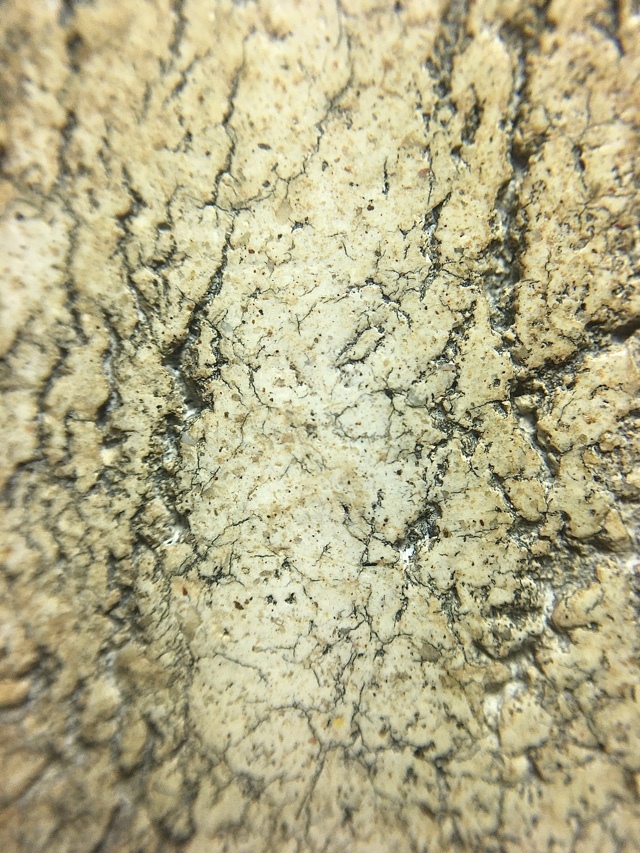
The contents of the Muan Sarn Sacred Clay reveal the essential elements expected from an authentic Pra Somdej Wat Rakang. The front face design is exquisite, as were all the block presses crafted by artisan Luang Wijarn, a royal artisan from the Chang Sip Moo group of craftsmen.
Pra Somdej Wat Rakang ranks among the classic Pra Somdej amulets of Somdej Dto, alongside Pra Somdej Wat Gaes Chaiyo and the Pra Somdej Wat Bang Khun Prohm. These amulets share popularity, beauty, sacredness from the Puttapisek ceremony, and a similar price range. Somdej Dto, the most celebrated Thai monk, and his Pra Somdej Wat Rakang, Gaes Chaiyo, and Bang Khun Prohm amulets (along with those from Wat Kanlayanamit, Kru Song Klong, and other hidden treasures) are the top choices in the Benjapakee Family, representing the highest tier of Pra Somdej amulets.
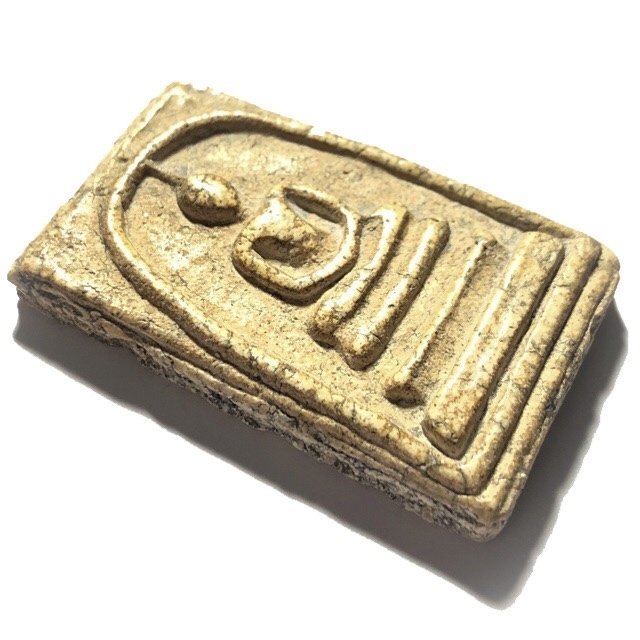
The Pra Somdej Wat Rakang amulet serves as the keystone and master amulet (Ongk Kroo) for all other Pra Somdej amulets. It features an image of the Buddha seated on a Dais, an iconic creation by Somdej Pra Puttajarn (Dto) Prohmrangsri of Wat Rakang Kositaram. Various 'Pim' (models) offer distinct design elements.
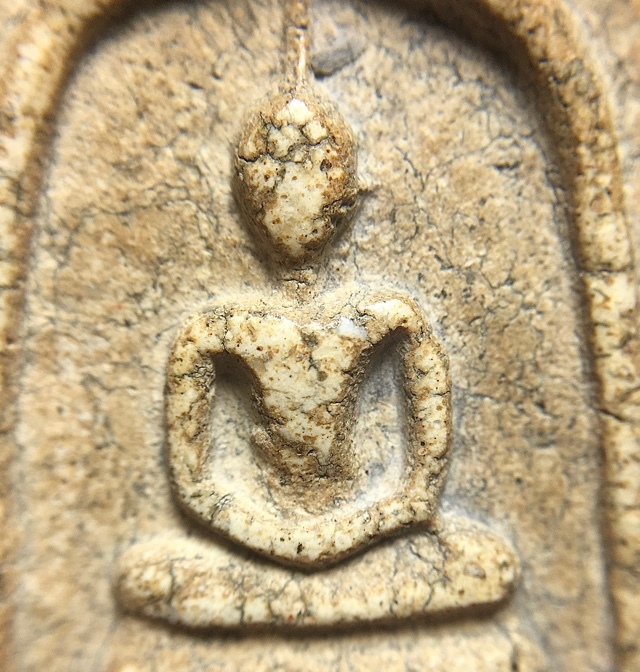
The Pra Somdej Wat Rakang, enriched with sacred powders and blessings from Somdej Dto, holds immensely potent Buddha magic. Crafted from a base of sea shells, dried rice from alms rounds, the five sacred magic powders of Somdej Dto, and 'Nam Man Dtang Iw' (a special oil for mixing), these amulets are renowned for their durability, even when submerged in water. The unique properties of 'Nam Man Dtang Iw' contribute to mold resistance, surpassing other oils like linseed oil.
The creation of a Dtamra, comprising exactly 84,000 amulets to match the number of Suttas in the Tripitaka, is a key criterion. Officially recognized Pim Song (shapes and sizes) of Pra Somdej Wat Rakang include Pim Pra Pratan, Pim Yai Niyom, Pim Chedi, Pim Prok Po, Pim Gaes Bua Dtum, Pim Gaes Talu Sum, and Pim Thaan Saem, as listed by the 'wongarn Pra Krueang.'
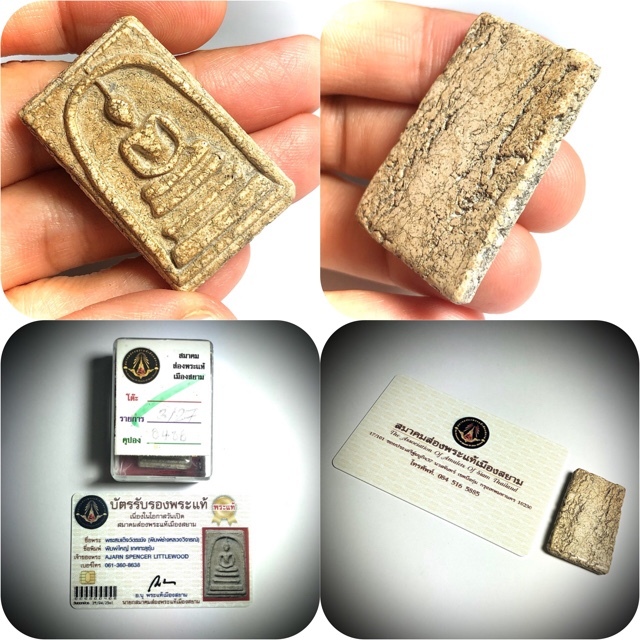
Loopom Magic Crystal Luang Por Lersi Ling Dam
Look Gaew Sarapat Neuk Sacred Crystal
Discover the Mystical Power for Wish Fulfillment by the Great Master Luang Por Ruesi Ling Dam
The Look Gaew Sarapat Neuk is an extraordinary amulet that has captivated the hearts of devotees for generations. Crafted by the revered Master Luang Por Ruesi Ling Dam, this sacred crystal holds the key to unlocking your deepest desires. Its mystical reputation echoes through time, as it continues to work its wonders in the lives of those who seek its blessings.
A Timeless Legacy
The Look Gaew Sarapat Neuk amulet enjoys the distinction of being one of Luang Por Ruesi Ling Dam's most renowned creations. Its fame, then and now, speaks volumes about its incredible power. In an era long past, during the lifetime of Luang Por Ruesi Ling Dam, this amulet gained instant recognition for its ability to grant wishes. It has since become a household name among Thai Buddhist devotees, a symbol of hope and fulfillment.
Shapes, Sizes, and Colors of Wonder
The Look Gaew Sarapat Neuk amulet manifests in various shapes and sizes, each possessing its unique charm and significance. Whether rounded, diagonally cut with a pendant hoop (special version), or elongated, these amulets come in different forms to cater to individual preferences. Furthermore, they are available in a spectrum of colors, including turquoise, sienna, and white. These variations were released across different years and editions, all of which received the blessings and empowerment of Luang Por Ruesi Ling Dam through the sacred Putta Pisek Ceremony (Buddha Abhiseka) at Wat Ta Sung.
The Power of the Look Gaew Jakkapat Crystal
The mystical journey of the Look Gaew Sarapat Neuk amulet is intricately tied to the enigmatic Look Gaew Jakkapat Crystal. This extraordinary crystal, shrouded in mystery, was bestowed upon Luang Por Ruesi Ling Dam by Kroo Ba Jao Chum. In a two-day revelation, Kroo Ba Jao Chum imparted the secret knowledge and methods associated with this magical crystal. Its origins remain unknown, hidden in the annals of time.
Kroo Ba Jao Chum, recognizing the potential within Luang Por Ruesi Ling Dam, entrusted him with the Look Gaew Jakkapat Crystal. He prophesized that it would enable Luang Por Ruesi Ling Dam to achieve remarkable success in his endeavors. This prophecy would soon materialize into reality.
A Life Transformed by Miracles
In the years that followed, Luang Por Ruesi Ling Dam harnessed the power of the Look Gaew Jakkapat Crystal to bring miracles into his life. He successfully raised significant funds and undertook numerous auspicious projects, temple renovations, and restorations. The amulet served as a lens for his meditative focus, enabling him to channel the power of Kasina magic and bless the Look Gaew Sarapat Neuk crystals.
Luang Por Ruesi Ling Dam's close association with the legendary Luang Por Parn of Wat Bang Nom Kho, a renowned sorcerer, and his own mastery of magical arts solidified his status as a revered Guru Master. His amulets, now considered rare and highly sought after, have garnered international acclaim for their sacred power.
Amulets of Surety and Miraculous Powers
While Luang Por Ruesi Ling Dam is celebrated for various amulets, the Pra Kam Khaw and the Pra Hang Hmaak Amulet stand out prominently. These sacred powder amulets find a place in the homes and around the necks of countless devotees. However, his legacy includes a vast array of other amulets, such as the Look Gaew Sarapat Neuk and the famous 'Pra Putta Jao Pratap Sadtw' Buddha Riding on Animals amulets. Each of these amulets carries its unique blessings and significance.
A Guide to Reverence and Miraculous Blessings
To unlock the full potential of these sacred amulets, one must adhere to a set of rules for Bucha (worship): Before commencing daily tasks, reflect on the Buddha's achievements and hold deep respect for the Buddha in your heart.b Place the amulet between your palms and raise it to your forehead.
Chant the Maha Namasakara three times.
Afterward, state your wishes, saying, "Today, I ask for... (express your desires). Blessings."
This act of devotion, when performed with unwavering faith, activates the amulet's powerful aura, filled with charm and blessings.
The Path to Wealth and Prosperity
In pursuit of wealth and prosperity, the Kata Ngern Larn (Millionaire Kata for Riches) can be recited, as imparted by both Luang Por Parn and Luang Por Ruesi Ling Dam. This Kata harnesses the magic of Maha Lap (great fortune) to call upon boundless riches.
Chant Maha Namasakara three times before reciting the Kata Ngern Larn:
Namo Dtassa Pakawadto Arahadto Sammaa Samputtassa, Namo Dtassa Pakawadto Arahadto Sammaa Samputtassa, Namo Dtassa Pakawadto Arahadto Sammaa Samputtassa
Then, recite the Kata Ngern Larn:
Sambpadtijchaami Naa Sang Si Mo
Prahmmaa Ja Mahaa Taewaa Sappae Yagkhaa Bparaayandti (Kata to remove Obstacles)
Prahmmaa Ja Mahaa Taewaa Apilaapaa Pawandtumae (Kata for Wealthy Fortunes of Money)
Mahaa Bpanyo Mahaa Laapo Pawandtumae
The Art of Accelerated Fortune
To hasten the arrival of good fortune, recite the following Kata:
Sambpadtijchaami Peng Peng Paa Paa Haa Haa Leu Leur
Repeat the entire Kata nine times.
The Guardians of Your Wishes
As you undertake your spiritual journey with your amulets, remember that the Buddhas of the ages will descend to protect and guide you. Always hold the Buddha in your heart, and let your amulet serve as a sacred representation of the Buddha himself.
A Life of Miracles Awaits
With faith and devotion, success and miracles await you. Each day, as you remember the Buddha and Luang Por Ruesi Ling Dam, may your wishes be fulfilled, and may blessings shower upon your life.
Pra Laks Hnaa Tong Ongk Kroo Locket
Who is Nang Kwak?
LP Ngern Fa Kamron Amulet Wat Bang Klan
Pra Khao Kam LP Lersi Lingdam 2533
Phra Pidta Thai Amulets
In Thai, Phra Pidta means "closes" or "covers" its eyes, which is precisely what this Buddha amulet portrays. There are different types of Phra Pidta in Thailand, including those with four or six arms, and those fully covered in mantras. However, the closed eyes Buddha remains a favorite among Thai citizens.
The hands covering the eyes on this amulet symbolize a blocking out of the outside world during intense Sammabat meditation, which is a type of jhana level meditation. Such meditation can even cross-over into Abhinna, or supernatural experiences that meditators in the fourth Jhana sometimes attain.
Many people buy these amulets to increase their wealth and business prosperity, but they are also believed to bring good luck and protection from harm of all sorts. In particular, Phra Pidta's closed eyes function to prevent villains and avoid harm from weasels and devils. Wearing this amulet is said to bring unexpected money and success in business.
According to legend, Phra Pidta was an apprentice of Buddha and had accumulated many blessings and virtues in his past lifetimes as a human. He has had many different past lives, including one where he saved other monks from drowning during a flood and another where he built a simple shed for a meditating monk to shield him from the sun.
Phra Pidta's handsome appearance and good karma made him the subject of many rumors and misunderstandings, including a supposed affair with a female worshiper. To avoid such rumors and focus on his practice, he used his supernatural power to change his appearance, but his followers' enthusiasm remained.
Ultimately, he closed his eyes for a long time, ignoring people's words and attitude and focusing entirely on his practice. This resulted in the facial image we see today, with his eyes covered to signify the need to cover up the six roots of sensations and the six gunas, which can keep one in mind the teachings of Buddha.
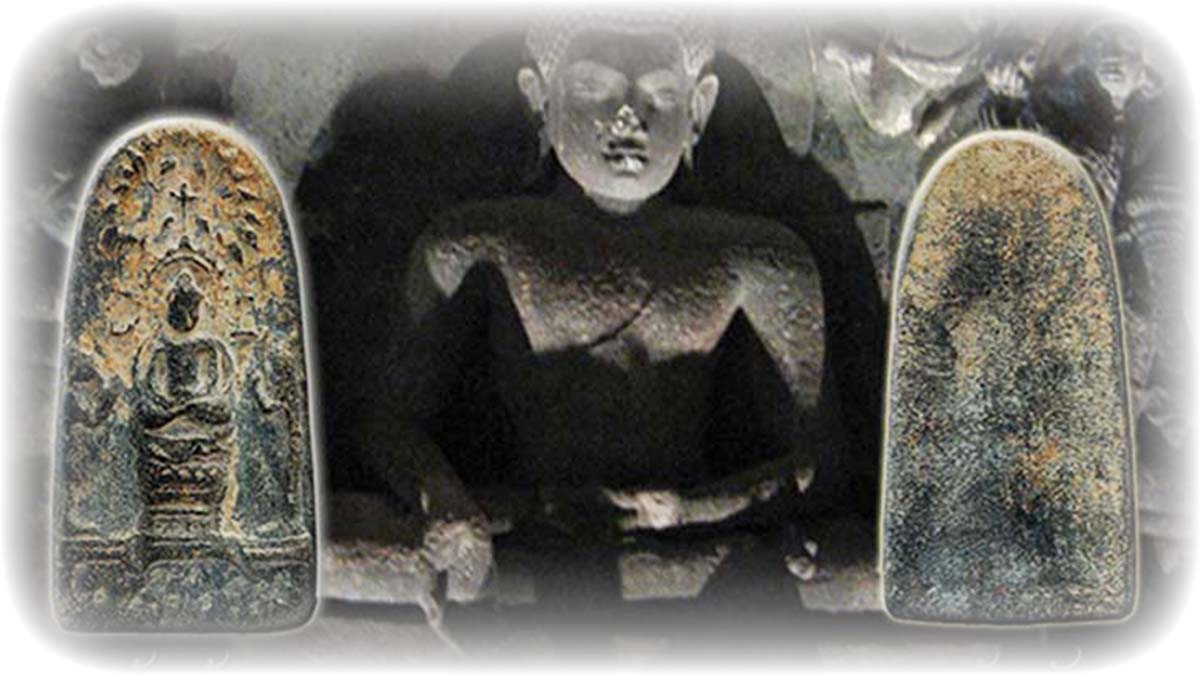


























.png)
.jpg)


.JPG)
.jpg)
.png)
.jpg)
.jpg)
.jpg)
.JPG)

